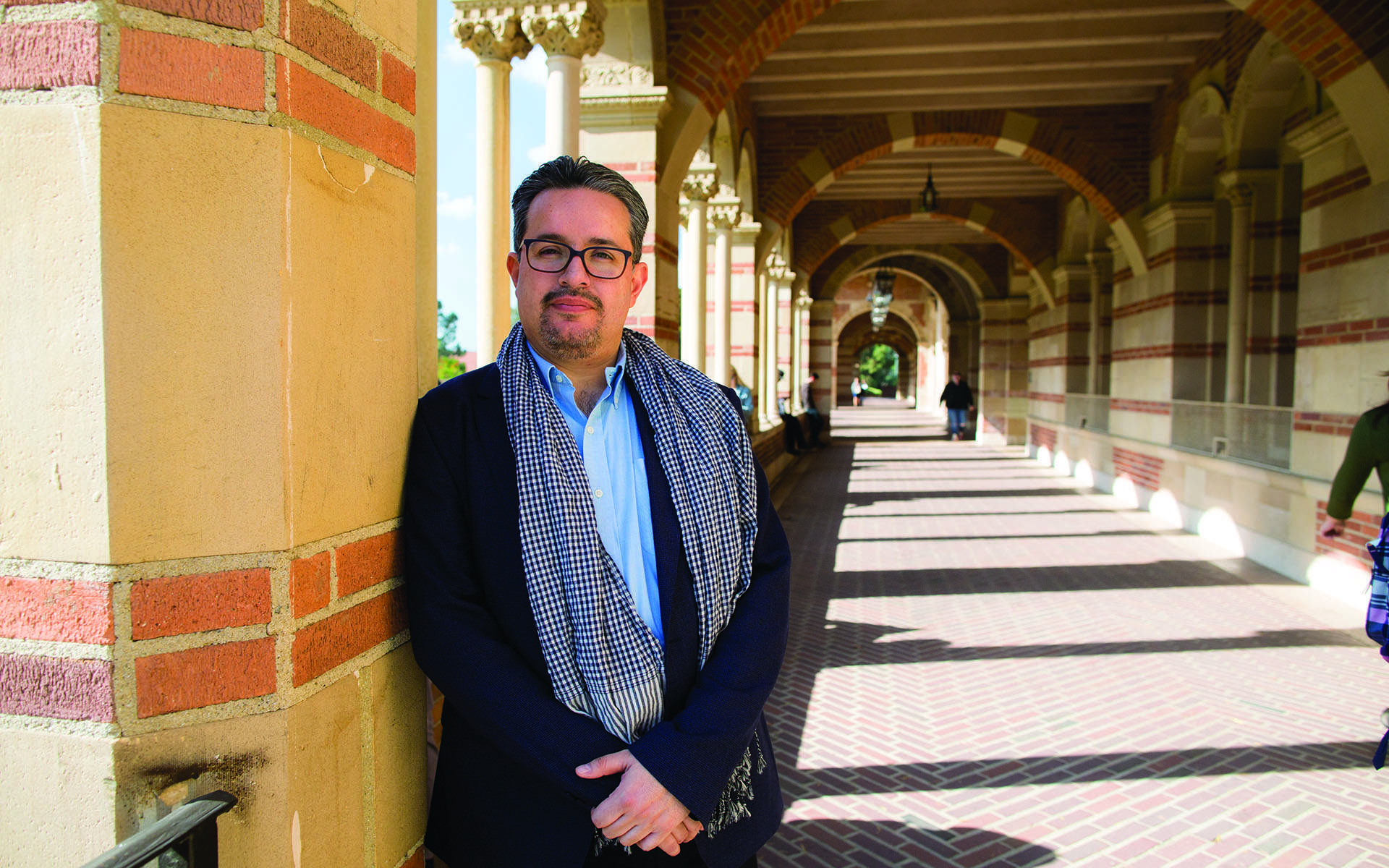Clinical psychologist Eric López Maya discovered meditation in the wake of a devastating loss during college. Since then, the postdoctoral scholar at UCLA’s Mindful Awareness Research Center has been working to share mindfulness-based interventions adapted for Spanish-speaking audiences, founding the Mexican Institute for Mindfulness (MIM) to advance his mission.
Why did you start meditating?
It was around 1999, in college. My father became ill and died within
a year. It was a huge blow, and I explored different alternatives to alleviate my suffering. Somehow I discovered a book on Buddhist meditation. I read a couple of paragraphs and did a simple meditation exercise, and that was it: Something clicked inside me. Those first practices gave me the possibility of having a silent mind for a little bit, of quieting the turmoil I was going through.
And you made a career of it?
Yes. Around 2002, I spoke with a professor who oversaw a relaxation techniques program. I told him about my meditative experiences, and his response was, “Why don’t you teach
a meditation course?” I was terrified and excited at the same time. But I started teaching a free 10-week meditation course for psychology students. We would put up posters around school, and 60 people would show up. It was very satisfying. I started considering this as a career alternative.
Talk a bit about MIM.
After college, I became an independent instructor teaching mindfulness and Mindfulness-Based Stress
Reduction throughout Mexico nonstop from 2003 to 2011. That endeavor formally became known as the Institute about seven years ago. That was when I decided mindfulness should have a larger impact in Mexico and Latin America.
What’s MIM’s mission?
We have three areas of focus. My colleagues and I started offering more mindfulness-based programs for schools, companies, and the general public—services especially geared for a Latino population. We also have a diploma-granting teacher training program. It’s the only program of its kind in the Spanish-speaking world.
The third focus is research. The research I’m doing at UCLA is part of what happens in the Institute. There’s a huge lack of research on mindfulness in Latino populations, and not a lot of attention to cultural issues.
Is mindfulness a thing in Mexico and Latin America?
It’s not as popular as in the US, but it’s really picking up. We can barely cope with the demand.
Most Latino meditators in the US don’t stick to a single type of meditation. They’re kind of eclectic.
What about your work at UCLA?
Last year, on a pilot basis we started offering a free drop-in MAPs (Mindful Awareness Practices) for Daily Living class in Spanish at UCLA every Wednesday. It’s a half-hour of mindfulness meditation, and it has been successful. We’re also launching the same program in an online format, to reach Spanish-speaking people who don’t live in LA. And we plan a lot of outreach to Latino organizations in the US to promote mindfulness in Spanish.
Do you need to adapt mindfulness instruction to Latinos?
Part of the cultural adaptation is simply to have Latino instructors, because we are familiar with the use of language and sense of humor in
our culture. It was funny: When I started teaching mindfulness courses in English at UCLA, I would try to use the same jokes in class that I use with Latinos, and no one would laugh.
What is your research showing?
One interesting finding is that most Latino meditators in the US don’t stick to a single type of meditation. They are kind of eclectic in doing a mix of mindfulness meditation and vipassana and maybe prayer.
You’re a new father. How do you keep up with your practice?
I try to squeeze in my meditation practice whenever our four-month-old daughter is asleep, usually very early in the morning. And I try to embody presence whenever I’m holding her or talking to her. My wife also likes to meditate, although she’s been pretty busy lately—for obvious reasons.
read more
Tune In to Your Body With This 10-Minute Body Scan Meditation
Explore this guided practice to calm your mind, notice sensations in the body, and bring awareness to the present moment.
Read More
A Guided Walking Meditation to Savor the Day
This short walking meditation from Jon Kabat-Zinn encourages you to embracing mindful awareness with every footfall.
Read More
The Science and Practice of Staying Present Through Difficult Times
Research suggests that when we turn towards pain and discomfort, we can experience less of it. Plus, Ed Halliwell offers a guided meditation for being mindful when things get tough.
Read More







